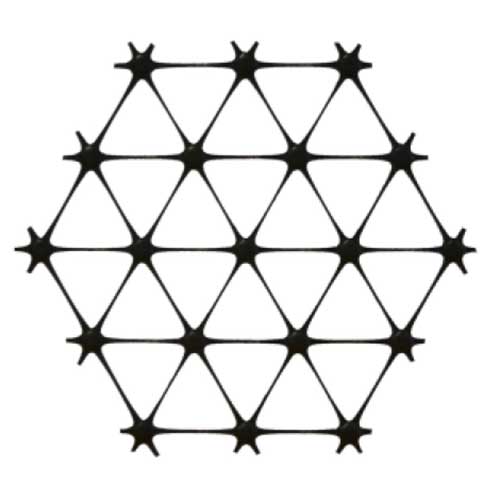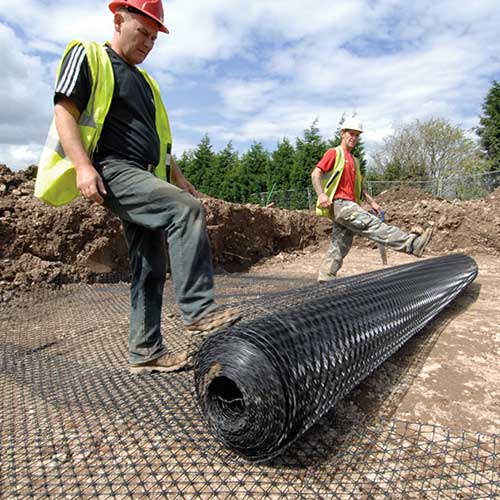Triaxial Geogrids Have an Effective Pattern
Before covering the other advantages of triaxial geogrids, let's look at some of their physical characteristics. After all, it is the unique pattern of the triaxial grid that contributes to its many advantages.
Generally, there are three classifications of geogrids:
1. Uniaxial (UX)
2. Biaxial (BX)
3. Triaxial (TX)
Uniaxial and biaxial grids have ribs that run in only two directions. This structure creates a more traditional gridded pattern. In contrast, triaxial grids have ribs running in three directions.
One set runs along the length. The second set runs along the width. The third set of ribs runs diagonally across the grid created by the first two sets of ribs. As you will see below, this pattern contributes to the benefits of triaxial grids. Additionally, triaxial grids are also often made with dense polymeric material. Now that you know about that basic physical difference, here are more reasons why triaxial grids are effective.
History shows that triangles are one of the strongest shapes for construction. This holds true for triaxial geogrids as well. The triangular apertures of a triaxial geogrid contribute to a great bearing capacity. That's why triaxial geogrids are such a great option for road construction.






